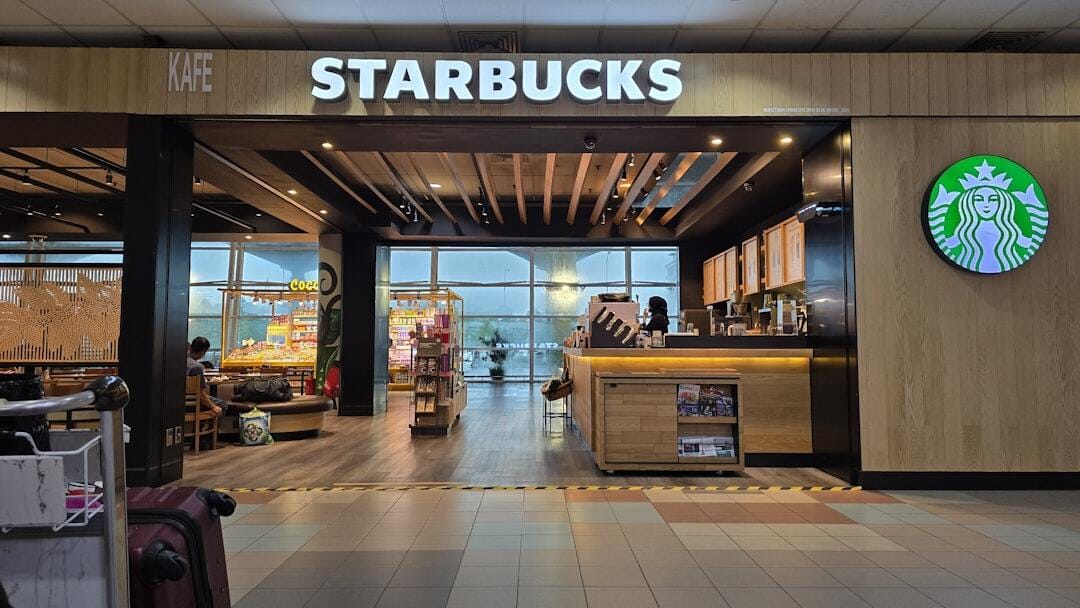In 1971, Starbucks started as a single coffee bean store in Seattle’s Pike Place Market. It wasn’t selling lattes or Frappuccinos, just roasted beans and brewing equipment. But by the 1980s, under Howard Schultz’s vision, Starbucks reimagined itself as more than a coffee company. It became the “third place” between home and work, a cultural experience wrapped in a cup.
Fast forward: Starbucks scaled from a handful of local shops to over 38,000 stores worldwide, driving billions in annual revenue.
But here’s the kicker: Starbucks didn’t get there by just selling coffee. Coffee was everywhere. What set them apart was a marketing engine built on emotional branding, loyalty programs, community-driven storytelling, and ecosystem expansion.
In this 5th Issue of Vibe Marketing, we’ll cover five key marketing lessons from Starbucks’ Growth Stage lessons you can apply directly to your startup today & your personal life
Each lesson covers:
What Starbucks did
Why it worked
The results they achieved
How you can apply it
Let’s dive in.
Lesson 1: Storytelling in Paid Ads
What Starbucks Did
Instead of pushing “coffee,” Starbucks sold the idea of a lifestyle, warm spaces, community, and a “third place” between home and work. Their ads and store experiences mirrored this bigger story.
Why It Worked
Storytelling shifted coffee from a low-margin commodity to an emotional purchase. Customers weren’t buying caffeine; they were buying belonging. That emotional lever fueled premium pricing.
Results
Expanded from a few dozen Seattle stores in the 1980s to 1,000+ by the 1990s. Became the category-defining coffeehouse experience worldwide.
How You Can Apply It
Craft a narrative that makes your product bigger than its features.
Sell the lifestyle or outcome, not the function.
Embed that story in ads, landing pages, and even UI.
👉 Lesson for you: If you don’t tell your story, you’ll just look like every other commodity.
Lesson 2: Loyalty Programs & Ecosystem Integration
What Starbucks Did
Launched Starbucks Rewards points, perks, and easy mobile payments. It wasn’t just a card; it became a daily ritual embedded in the Starbucks app.
Why It Worked
Gamification and habit loops made customers return daily. Rewards gave people a reason to choose Starbucks over cheaper options. Loyalty meant stickiness.
Results
60M+ active members today, contributing to over 50% of Starbucks’ annual revenue.
How You Can Apply It
Start small: create a points system, referral perks, or milestone badges.
Even a basic digital “thank you loop” keeps customers hooked.
👉 Lesson for you: Retention > acquisition. Reward habits and you’ll print compounding growth.
What Starbucks Did
Turned product launches into cultural events (#PumpkinSpiceLatte). Leveraged Instagram and Twitter with UGC, influencer shoutouts, and seasonal memes.
Why It Worked
Made a cup of coffee share-worthy. Seasonal scarcity + FOMO made people post and brag about their drinks, doing Starbucks’ marketing for free.
Results
Pumpkin Spice Latte alone brings in ~$500M annually and is still a pop culture event every fall.
How You Can Apply It
Pick one feature or product and make it seasonal.
Seed hashtags and let loyal users become your marketers.
Small rituals can spark viral loops.
👉 Lesson for you: Don’t just launch features, launch moments.
Lesson 4: Paid Ads with Emotional Branding
What Starbucks Did
Shifted ad spend from pushing lattes to promoting values—sustainability, fair trade, local community.
Why It Worked
Emotional branding built trust and loyalty. Customers justified higher prices because they felt part of a “good cause” with their purchase.
Results
Starbucks maintained premium pricing even during recessions and market downturns.
How You Can Apply It
Align ads with your mission, not just your features.
Highlight values that resonate with your customers’ identities.
👉 Lesson for You: Mission isn’t fluff it’s fuel for pricing power.
Lesson 5: Ecosystem Expansion
What Starbucks Did
Broke out of coffee shops by selling packaged beans, bottled drinks, and delivery partnerships with apps like UberEats.
Why It Worked
Instead of waiting for customers to come in, Starbucks met them in grocery aisles, offices, and homes. Multiple touchpoints = deeper brand ownership.
Results
Consumer packaged goods business hit $1B+ by 2018. Starbucks became omnipresent.
How You Can Apply It
Integrate into your customers’ existing ecosystems marketplaces, integrations, or partnerships.
Make your product unavoidable in their workflow.
👉 Lesson for you: Don’t just scale vertically, expand horizontally into every place your users live.
Key Takeaways for You
Stories sell outcomes, not features → Use narrative-driven marketing to elevate your product above commodities.
Retention compounds → Reward loops and loyalty systems keep customers for life.
Make moments, not launches → Seasonal or cultural drops create buzz and viral adoption.
Values fuel pricing power → Emotional branding builds trust and keeps margins high.
Expand horizontally → Integrations and ecosystem plays multiply your reach.
"People don’t buy what you do, they buy why you do it." – Simon Sinek
Starbucks’ growth wasn’t about coffee, it was about creating a lifestyle brand with rituals, rewards, and emotional resonance. Each tactic, storytelling, loyalty, community, mission-driven ads, and ecosystem expansion, built compounding layers of stickiness.
For you, the blueprint is clear:
Craft a story bigger than your product
Reward repeat use with habit loops
Turn features into cultural moments
Lead with values to build trust
Integrate into every corner of your user’s life
You don’t need Starbucks’ billions to apply this. Start small:
Write one sentence that explains your product’s lifestyle value
Launch one tiny rewards/referral loop
Create one seasonal or exclusive moment
Share one values-driven story in your next ad
Integrate with one ecosystem your customers already use
That’s how Starbucks transformed coffee into culture. Your product can do the same.
What story are you telling about your product, one that makes people come back, not for what you sell, but for who they become when they use it?

